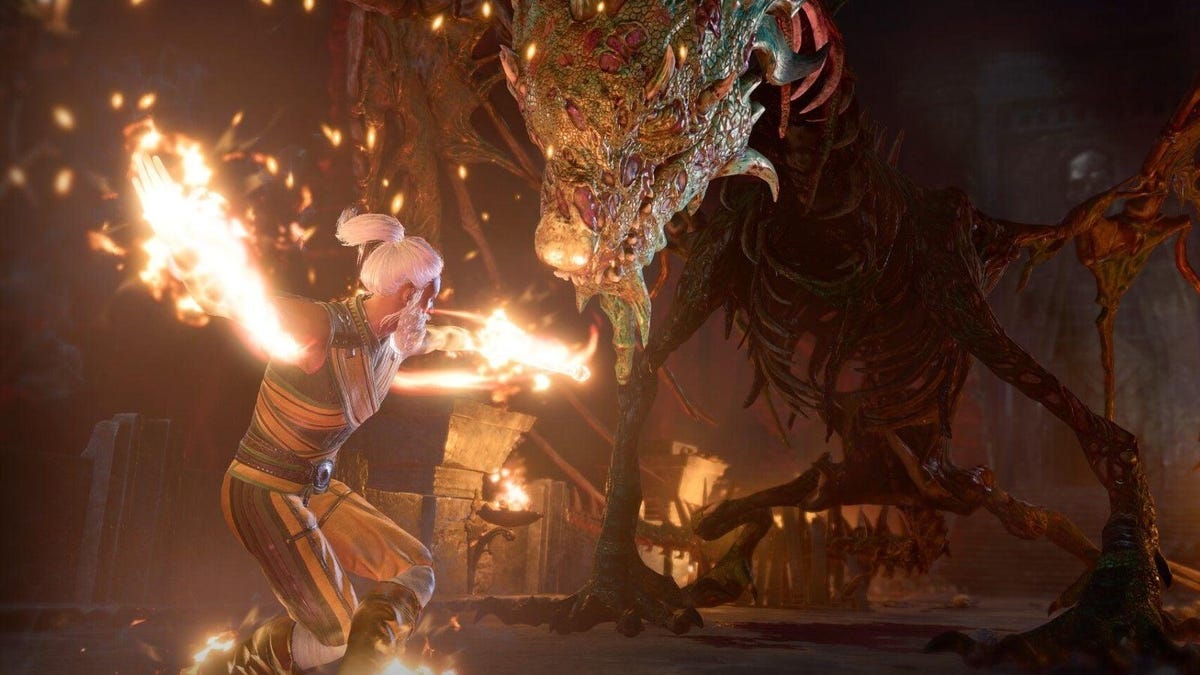
With as many classes and subclasses as there are in Dungeons & Dragons’ current edition, trying to find balance for all of them is inevitably going to end up with some being left behind. While Monk as a class is one of the game’s most interesting, one version of them has never quite hit its potential—but that could help with the launch of Baldur’s Gate 3.
BG3, now out on PC today after three years in early access, is largely mechanically based on the rules underpinning D&D’s Fifth Edition, with tweaks to certain mechanics and rules to account for the fact that you’re playing a video game, not the tabletop RPG. Even then, it goes a long way to giving you a great D&D experience, whether in its combat, its storytelling, or its occasional opportunity to have sex with a wildshaped druid. But bears of literal and metaphorical senses aside, while it takes a lot of D&D’s systems, classes, and subclasses as they are in the tabletop game wholecloth, Baldur’s Gate 3 was also an opportunity for developers Larian Studios and Wizards of the Coast to improve on some pressure-point issues for gamers in the process.
In a recent video shared by the D&D official YouTube channel this week (via PC Gamer) breaking down the classes and subclasses that will appear in BG3, while discussing the three subclasses available to Monks—Way of the Open Hand, Way of the Shadow, and Way of the Four Elements—Larian lead systems designer Nick Pechenin confirmed that the latter of those subclasses will feel a bit different in the game compared to D&D.
Advertisement
“We tweaked the ki economy a little bit [compared to 5e] at higher levels to make sure that you never run out of juice as a Monk,” Pechenin said of the Four Elements subclass. “As long as you’re resting properly, as long as you’re not pushing too many fights without resting, you should have access to most of your kit in most situations.”
This should come as a relief as anyone who’s tried to play a Four Elements Monk in the tabletop game. In D&D, Monks have access to a resource to fuel their abilities called Ki points—Open Hand Monks can empower their martial abilities, while Shadow Monks can use it for their stealth skills. Four Elements Monks largely use Ki to cast spells in different disciplines, making them akin to a bender in Avatar—close-ranged fighters who also can dip into the magical side of D&D to hinder foes or deal even more damage. That’s the fantasy of the subclass. The reality is that usually those spells are never actually as effective as just smacking someone with your fists would be—whether that’s because there are other martial abilities that have much more effective bonuses to damage or crowd control, or because the disciplines simply use too much of your turn economy, in terms of resource in both taking actions and a large amount of your Ki points.
Advertisement
Advertisement
We’ll have to dive into the game itself to see the full extent of what Larian’s tweaked about the Four Elements Monk—specifically, if it feels better in the video game context rather than its tabletop one. But at the very least, a change in how much Ki you need to spend to use disciplines will hopefully make them feel more worth spending those resources on. What’s the point of having a button to press if it doesn’t feel good pressing it, after all? And hopefully as the next edition of D&D itself has developed alongside Baldur’s Gate 3‘s lengthy path to release, maybe Wizards itself took a few pointers from Larian, and that Last Airbender/Legend of Korra fantasy will feel better on the table soon, too.
Want more io9 news? Check out when to expect the latest Marvel, Star Wars, and Star Trek releases, what’s next for the DC Universe on film and TV, and everything you need to know about the future of Doctor Who.
Services Marketplace – Listings, Bookings & Reviews